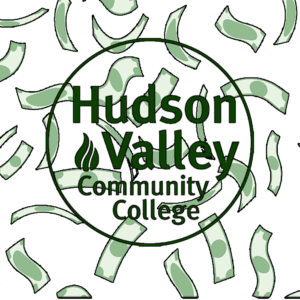How can students make money on campus?
Jacob Pitts
Staff Writer

Students of all interests and personalities have the potential to make money and get involved on campus.
Whether you’d enjoy tutoring in the Marvin Library’s Learning Assistance Center or giving campus tours, odds are you can find a way to contribute that adheres to your class schedule.
One of the best places to start the search is the Center for Careers and Transfer, located in CTR 290. The Center for Careers and Transfer oversees two programs that assist students in finding employment: Federal-Work Study and College Worker.
The Federal Work-Study program is funded by the federal government, and allows for matriculated students to pay off a portion of their expenses as long as their financial aid deems them eligible.
They are also required to have a completed FAFSA on file, be in good academic standing (a grade point average of 2.0 or higher) and currently enrolled in six or more credit hours.
Some of the departments that hire Work-Study students include, but are not limited to, the Admissions Office, Athletics, Financial Aid, the Instructional Media Center, Student Activities, Dental Hygiene, Nursing and the Viking Child Care Center.
Work schedules can be arranged around students’ courses and other obligations, enabling them to work before, after and in-between classes.
All Federal Work-Study employees on campus are paid $9.70 an hour (New York minimum wage), and can work a maximum of 20 hours each week. This semester there are 70 positions, all of which have been filled.
Fortunately, the second program, College Worker, still has available opportunities. Unlike Federal Work-Study, the College Worker program is funded by the college budget. Students interested can look on the closet door to the left of the Center for Career and Transfer’s entrance or visit the HVCC job bank online.
Gayle Healy, director of Careers and Transfer, explained the role that her department has in the applying and hiring process. “We basically shuffle the paperwork. We make sure that the college is in compliance with the equal opportunity regulations [and post] in our job bank, which is accessible to all students,” said Healy.
Healy continued, “We also post the positions on our closet doors, so that if students walk in and they’re just here saying ‘I’m interested in working on campus,’ we can say ‘okay, this is what we have open right now.’ So, a student can give us their application, [then] we send the application to the area that’s hiring and they contact the students, interview the students and make the hiring decision. They decide who to interview and who to hire.”
The College Worker program lets students work up to 18 hours per-week, and, like the Work-Study program, it requires students to be matriculated, in good academic standing and taking at least six credit hours.
It also pays $9.70 an hour. The application, which can be picked up in the Center for Careers and Transfers, asks for three references. Gayle Healy recommends that these references should be past employers, not family members.
Gayle also strongly suggests that freshman students entering their second year should consider orientation jobs.
“They’re hiring orientation workers now, so if somebody likes to give tours and wants public-speaking experience, it’s a great way to do that. It’s a fantastic way to get hours over the summer, because we run a lot of orientation sessions and we need students for each one,” said Healy.
Healy continued, “Every session has a tour, and you’re getting engaged with the campus, the faculty and the new students. It’s a position you can get some pretty good hours in, and it’s a great opportunity for this year’s first-year students to keep an eye out for.”
Tutoring in the Marvin Library’s Learning Assistance Center isn’t facilitated by the Center for Careers and Transfer, but it’s another way to make money on campus. In order to become a tutor, students need a recommendation from a professor in their area of specialty.
Lastly, The Hudsonian also pays its contributors if they qualify under certain financial aid stipulations.
Staff photographers earn $10 per photo, staff writers get $25 an article and editors get paid per issue.
The Hudsonian holds weekly meetings at 2 p.m. in ADM 107, and no experience is required to join. Just show up, claim a story and check in with the appropriate editor for guidance.
Having a job on campus is a smart financial decision, even saving students gas money by eliminating the commute to work elsewhere. It also looks great on a resume and can give students an impressive head start in their desired career field.
